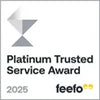Copper Beauty Honeysuckle Plants
'Copper Beauty' Honeysuckle has striking copper-orange tubular flowers that attract pollinators. To 10m x 2m
Browse our variety of honeysuckle or our full range of climbing plants.
Features
- Semi-Evergreen, dark green leaves
- Bronze young foliage
- Yellow tubular flowers Jun-Jul
- Dark blue ornamental berries
- Full hardy
- Needs support. To 10m.
- Sun or partial shade
Growing Copper Beauty Honeysuckle
It's deer, rabbit and windproof and will, therefore, prove perfect for siting in an exposed or woodland position where it could cover a fence or tree stump. It can also be used to cover pergolas, arches and boundary walls. It's a woodland and cottage garden plant not suitable for formal planting. It'll associate well with other Lonicera varieties and climbing roses.








 Secure, One-Tap Checkout
Secure, One-Tap Checkout
 Hand Picked, Delivered to Your Door!
Hand Picked, Delivered to Your Door! 1 Year Bareroot Guarantee
1 Year Bareroot Guarantee


